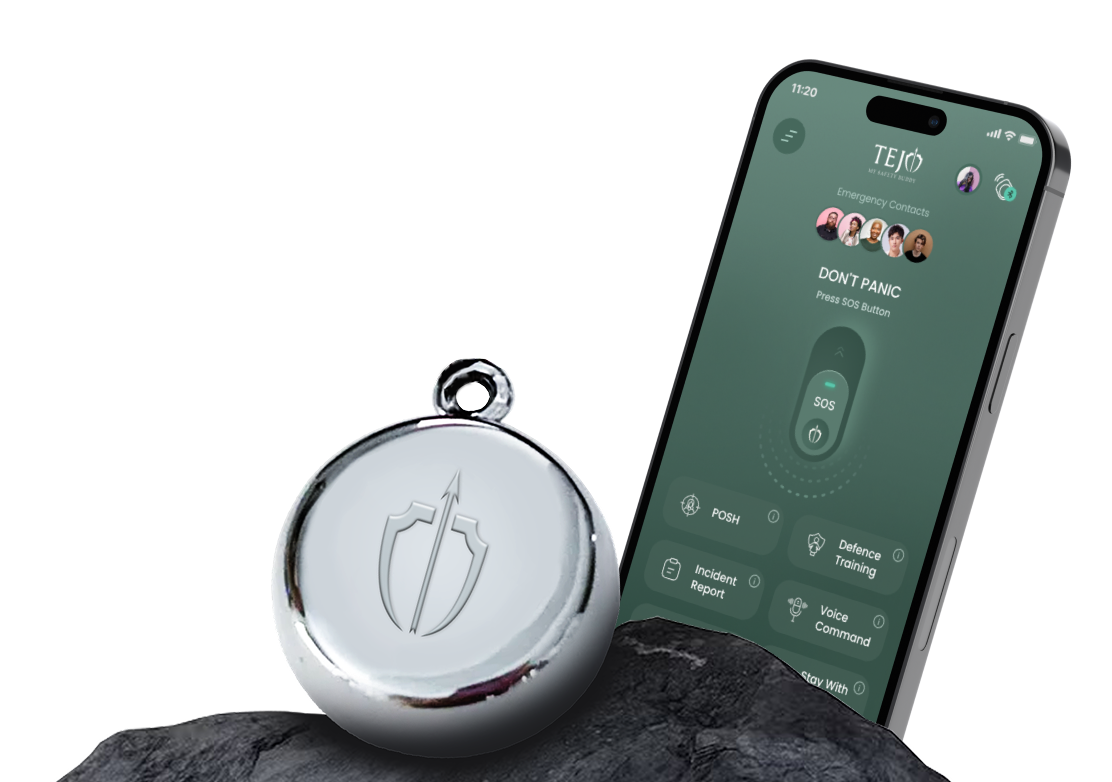7 Ways Manufacturing HR Leaders Can Ensure Safety of Women Workforce
Pradnya Rekha • 10 Jul 2025

Building safer, more inclusive workplaces for women in manufacturing
#tejo #womenatwork #smartsafetydevice #safewokrplaces #womensafety #womensafetyininida #womensafetydevices
Manufacturing is the backbone of our economy, but it also presents unique safety challenges for the women workforce. With multiple shifts, large worksites, and varying security infrastructure, ensuring women’s security requires careful planning and proactive measures.
HR leaders in manufacturing play a critical role in building a culture of safety that goes beyond standard compliance and truly protects women employees.
1. Provide Personal Safety Devices
Issuing personal safety devices like GPS-enabled wearables or panic alarms can empower women to seek help instantly during emergencies. Unlike traditional security measures, these devices travel with them—whether on the factory floor or during commutes.
2. Offer Comprehensive Safety Training
Training shouldn't stop at fire drills. Conduct specialized sessions on women's security, including self-defense basics, awareness of safe zones on site, and use of safety devices and apps.
3. Deploy Safety Apps for Real-Time Support
Integrate safety apps into HR policies. These apps offer location sharing, SOS features, and direct links to company security or local police. Companies can subsidize app costs or offer enterprise versions.
4. Improve Physical Security Infrastructure
Enhance lighting, install CCTV, and create monitored walkways from factory gates to parking areas. A visible, well-maintained security setup deters threats and improves trust.
5. Create a Women’s Safety Committee
Establish a committee with HR leaders, management, and women employees. This team can identify specific risks, recommend improvements, and ensure safety policies stay relevant.
6. Partner with Trusted Safety Providers
Manufacturers can partner with providers of personal safety devices and apps to offer bundled solutions. This approach ensures compatibility, ongoing support, and expert training for staff.
7. Build a Culture of Reporting and Response
Encourage women to report incidents without fear of retaliation. HR should establish a confidential, transparent process and ensure prompt, fair action.
In Conclusion
Protecting the women workforce isn’t just about avoiding legal penalties—it's about creating a secure, inclusive environment where all employees can thrive. By prioritizing women's security through technology, policy, and culture, HR leaders in manufacturing can set their organizations apart.
Ready to make women’s safety a priority?
Tejo offers personal safety devices and an integrated safety app to ensure your women workforce is protected, confident, and empowered.
Learn more at Tejo.co.in.

Ready to Elevate Women’s Safety in Your Organization
